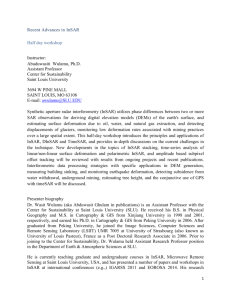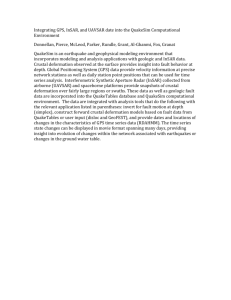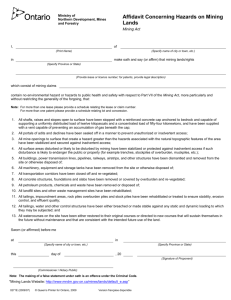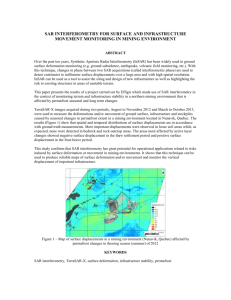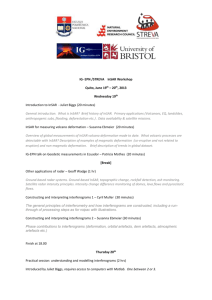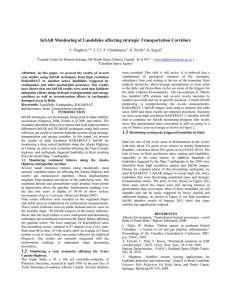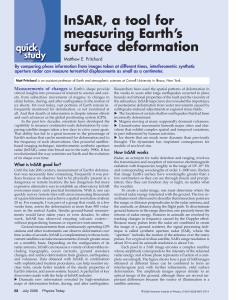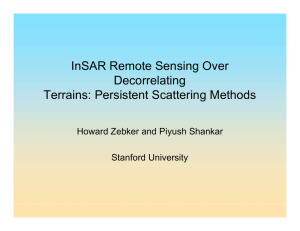InSAR ground deformation monitoring of mining area
advertisement
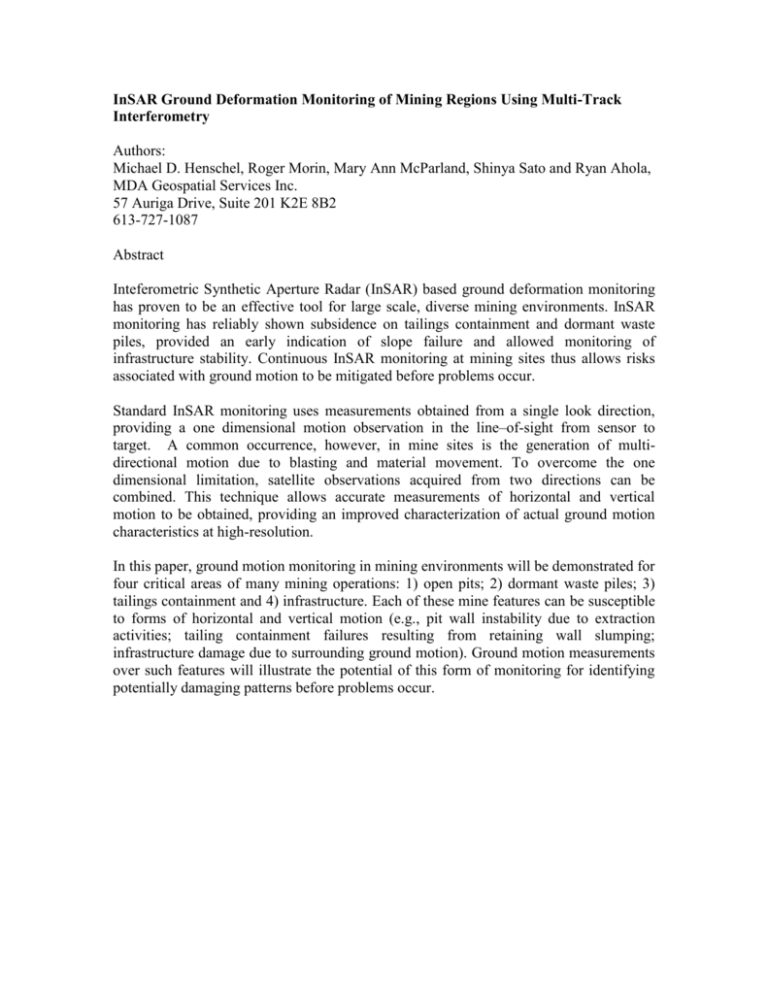
InSAR Ground Deformation Monitoring of Mining Regions Using Multi-Track Interferometry Authors: Michael D. Henschel, Roger Morin, Mary Ann McParland, Shinya Sato and Ryan Ahola, MDA Geospatial Services Inc. 57 Auriga Drive, Suite 201 K2E 8B2 613-727-1087 Abstract Inteferometric Synthetic Aperture Radar (InSAR) based ground deformation monitoring has proven to be an effective tool for large scale, diverse mining environments. InSAR monitoring has reliably shown subsidence on tailings containment and dormant waste piles, provided an early indication of slope failure and allowed monitoring of infrastructure stability. Continuous InSAR monitoring at mining sites thus allows risks associated with ground motion to be mitigated before problems occur. Standard InSAR monitoring uses measurements obtained from a single look direction, providing a one dimensional motion observation in the line–of-sight from sensor to target. A common occurrence, however, in mine sites is the generation of multidirectional motion due to blasting and material movement. To overcome the one dimensional limitation, satellite observations acquired from two directions can be combined. This technique allows accurate measurements of horizontal and vertical motion to be obtained, providing an improved characterization of actual ground motion characteristics at high-resolution. In this paper, ground motion monitoring in mining environments will be demonstrated for four critical areas of many mining operations: 1) open pits; 2) dormant waste piles; 3) tailings containment and 4) infrastructure. Each of these mine features can be susceptible to forms of horizontal and vertical motion (e.g., pit wall instability due to extraction activities; tailing containment failures resulting from retaining wall slumping; infrastructure damage due to surrounding ground motion). Ground motion measurements over such features will illustrate the potential of this form of monitoring for identifying potentially damaging patterns before problems occur.

